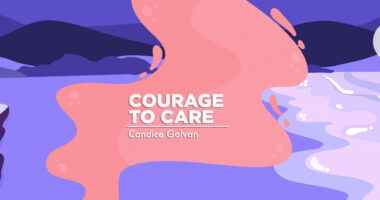The Burden of Taking Opioids for Neuromyelitis Optica

“Pain is inevitable, suffering is optional.” — Popular proverb
I once slipped on black ice at the end of our street. My handbag, its contents, and my cellphone flew just outside of arm’s reach. I could see our home while I lay on the cold and dirty city sidewalk. Maybe it was the shock of the fall, but there was no immediate pain in my right ankle — until I tried to move.
Then I felt an unbearable agony. I crawled to my phone and desperately called my husband to come and help me.
It took three months to recover from the torn ligaments in my ankle. To this day, certain movements create what feels like an electric shock. During that period of recovery, I struggled on crutches and wore an air brace, which made it difficult to dress for the cold weather. This was pain that people could sympathize with because they could see it.
It’s different from the daily pain I endure because of neuromyelitis optica (NMO). It is frustrating to explain what this pain feels like — the burning sensation, the pins and needles in all of my extremities, the numbness in my legs that turn into torturous spasms, and the endless back pain. When it is pain no one sees, it becomes suffering.
Pain no one sees
My specialists only manage my NMO diagnosis. My treatment plan is a regimen of medication to prevent future attacks. Without medication, my body may attack itself, leading to paralysis or vision impairment. But this is where the care from my specialists stops.
Pain that no one can see is subjective, so I’ve had to work with my primary practitioner to manage other NMO symptoms.
For my first 10 years of living with NMO, I was prescribed highly addictive opioids. I took OxyContin (oxycodone hydrochloride) daily as a pain management drug that was slowly released into my system, and then I took oxycodone, which offers a more immediate impact, as needed when my symptoms flared. Both have the same active ingredient, but work in different ways.
I was always careful not to jump dosages. In other words, one shouldn’t take three pills yesterday and one pill today, and then jump back to three pills tomorrow. This is how accidental overdoses can happen.
While I detest taking more pills, it was the only solution to my suffering. I became a high-functioning addict. That is, I was a working professional, wife, mother, and advocate, and I couldn’t be any of these things without pain medication. Withdrawal symptoms are real, so I had to be militant and always take the medication at the same time.
When the U.S. and Canada declared an opioid crisis, all practitioners who prescribed these drugs were asked to reevaluate their patients. Again, when pain cannot be seen, it is difficult to treat. I was referred to a pain management clinic, and my prescriptions were suddenly stopped.
The response to addiction
The only medical experts who knew how to help me safely withdraw from my opioids and replace them with a suitable alternative are found in an addiction outreach center. That was the pain management clinic I was referred to.
Entering the outreach center was a humbling experience. I felt embarrassed when the kind woman at the check-in desk offered me a sandwich and a hot beverage. Looking around the waiting room, I realized I was just as addicted to pain medication as the homeless patients waiting ahead of me.
I was utterly humiliated when the nurse asked me to provide a urine sample. She led me to a dirty washroom, which was obviously used by other patients to bathe themselves while they waited.
I decided I needed to speak up. I explained to the nurse that I was prescribed opioids because of a neurological disorder, and they were now being eliminated from my regimen.
Luckily, the nurse understood and took pity on me. I was escorted to the staff’s private facility to provide my sample.
For the last two years, I have been on Suboxone (buprenorphine/naloxone), one of the main drugs used to treat opioid addiction. It is still an opioid and has some pain management properties, which is why I’m still prescribed it. But it’s not as effective as my previous opioids, so my life has been greatly affected.
Suboxone is administered in a dissolvable pill or a strip, like a breath mint. Both formats have a terrible taste to discourage long-term use.
Since Suboxone is a controlled substance, I see my doctor every other month to get the prescription refilled. Unlike my other medications, I have to check in for this medicine. Initially, I had to check in every other week until I could prove my responsibility.
It’s fair that opioid caution exists because of how easy substance abuse can occur, in all demographics. That said, not all patients and applications are equal. We’ve done a great disservice to patients and our quality of life when we make generalizations about pain medications and try to eliminate them altogether.
I’m against opioids; however, I have yet to find an alternative that is as effective.
There are moments today when I feel abandoned, my invisible pain deemed unworthy. This is why advocacy and education on this subject are important.
Note: Neuromyelitis News is strictly a news and information website about the disease. It does not provide medical advice, diagnosis, or treatment. This content is not intended to be a substitute for professional medical advice, diagnosis, or treatment. Always seek the advice of your physician or other qualified health providers with any questions you may have regarding a medical condition. Never disregard professional medical advice or delay in seeking it because of something you have read on this website. The opinions expressed in this column are not those of Neuromyelitis News or its parent company, BioNews, and are intended to spark discussion about issues pertaining to neuromyelitis optica spectrum disorder (NMOSD).






Comments